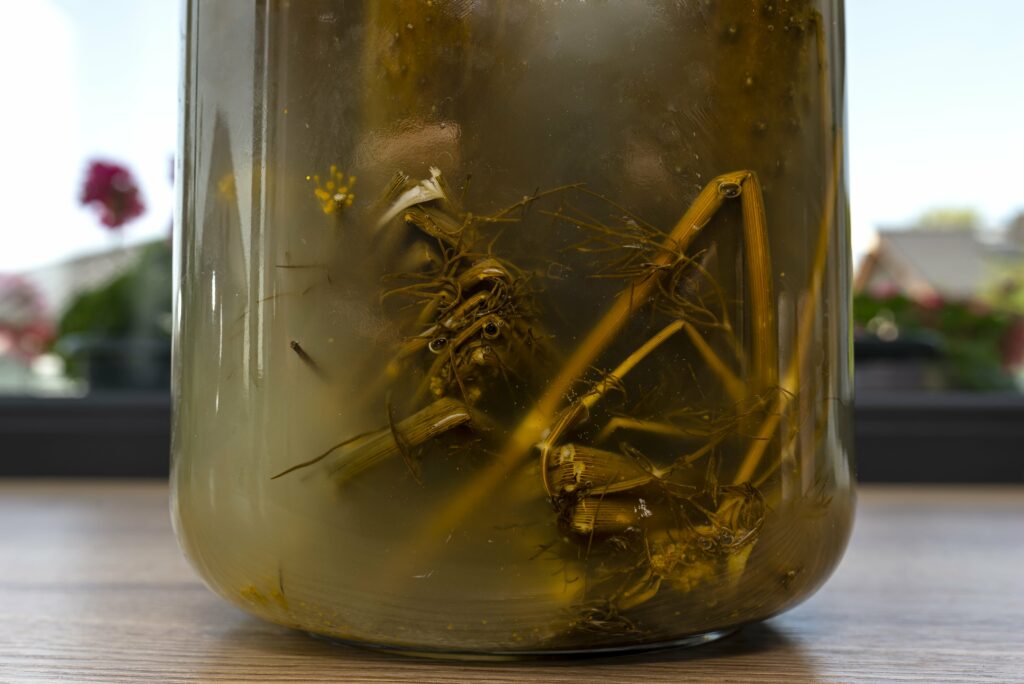A Brief History of Scorpions and Their Venom
Scorpions are ancient creatures, with fossils dating back to the Silurian period around 430 million years ago. They have evolved into about 2,500 different scorpion species that can be found all over the world, except for Antarctica.
The most diverse populations are located in subtropical countries such as Mexico, South America, and India. One thing that sets scorpions apart from other arachnids is their venomous sting.
Scorpion venom is a complex mixture of proteins and enzymes with varying concentrations depending on the species. Over time, scorpions have developed potent venom as a defense mechanism against predators and as a tool for capturing prey.
The Art of Defense: Exploring Scorpion Stings and Their Venomous Arsenal! Journey into the art of scorpion defense and the remarkable weaponry they possess. Explore our illuminating article on scorpion sting and venom to gain insights into their venomous arsenal. Discover the true nature of their stinging attacks!
The Importance of Studying Scorpion Venom

Studying scorpion venom is crucial for several reasons. Firstly, it can help us understand these fascinating arachnids better. It can teach us about their behavior, biology, evolution, and predator-prey dynamics.
Secondly, studying scorpion venom could lead to new medical treatments or therapies for humans suffering from various ailments such as cancer or chronic pain. There is clinical evidence that some toxins in scorpion venom affect sodium ion channels in nerve cells which could lead to pain management therapies.
Understanding how these toxins work on human ion channels can inspire new drug discovery studies to find future treatments for different diseases or disorders. Clearly understanding this underdeveloped tropical area will go a long way in addressing many unanswered questions surrounding these creatures’ venoms and how they interact with animal physiology both medically and evolutionarily.
What is Scorpion Venom?

Scorpion venom is a complex mixture of proteins and peptides that the arachnid uses as a defense mechanism against predators and to kill prey. Most scorpions produce venom, however, not all have the same toxicity level. Different species of scorpions produce different types and quantities of toxins that affect their prey differently.
The composition of scorpion venom varies from species to species but generally contains two categories of toxins: neurotoxins and cytotoxins. The neurotoxins target the victim’s nervous system while cytotoxins attack cells, particularly those found in the victim’s circulatory system.
Types of Toxins Found in Scorpion Venom
The venom typically contains three families of ion channel-specific peptide toxins: sodium channel (Na+), potassium channels (K+), and chloride channels (Cl-). The main component in most scorpion venoms is sodium channel toxins. These specific toxins affect cell membranes’ electrical properties essential for nerve cell function, acting on voltage-gated sodium channels found in nerves throughout the body.
Potassium channel toxins bind with voltage-gated potassium ion channels in cell membrane, blocking them off from their normal activities and preventing nerves from communicating effectively with muscles. Chloride channel blockers prevent chloride ions from moving across cell membranes’ electrochemical gradients slowing down vital cellular processes such as muscle relaxation.
In addition to these primary groups, there are many other smaller peptide molecules present within different venom types that contribute to its overall effectiveness. These components can cause an array of symptoms when stung by a venomous scorpion, ranging from mild pain to life-threatening reactions like respiratory failure.
Overall, scorpion venom is an incredibly complex mixture containing multiple types of toxin molecules working together to fight off predators and capture prey. Understanding these toxin components will aid more clinical evidence regarding new treatments for how venom affects both humans and other species.
How does Scorpion Venom work?
Mechanisms of action for different toxins in scorpion venom
Scorpion venom is composed of various compounds, each with its unique effect on the human body. These compounds work to disrupt cell membranes, leading to a cascade of events that can be harmful or deadly. The venom from the deathstalker scorpion, one of the most dangerous species found in North Africa and the Middle East, contains peptides that interact with ion channels in nerve cells.
This interaction leads to an influx of sodium ions into nerve cells, which causes them to fire uncontrollably. The Indian red scorpion’s venom contains neurotoxins that attack neurotransmitters in the brain.
These toxins bind to receptors on nerve cells, stopping the communication process between neurons and leading to paralysis. In contrast, bark scorpions found in Arizona and New Mexico produce a neurotoxin that activates neurotransmitter pathways, leading to muscle spasms and pain.
Effects on the human body
When a person is stung by a scorpion, they may experience serious symptoms ranging from local pain and swelling around the sting site to life-threatening complications such as myocardial dysfunction or respiratory collapse. Symptoms may vary depending on the type of scorpion involved but can include sweating, numbness, or tingling sensations throughout the body. Clinical evidence suggests that grass closely mowed near homes or underdeveloped tropical regions favoring various species’ proliferation may increase your likelihood of coming into contact with these creatures.
Despite their deadly potential when it comes to underdeveloped clinical therapies (in 2021) for cancer therapy using Scorpion venom are being developed since research has shown possible therapeutic effects against some tumor types without significant toxicity compared with traditional treatments like chemotherapy. Understanding how scorpion venom works is crucial because it allows us to develop better treatments for people affected by scorpion stings.
Medical Applications of Scorpion Venom
Use of Scorpion Venom in Pain Management
Scorpion venom has been used for centuries to alleviate pain. It contains compounds that target specific ion channels in the nervous system, which can help to block pain signals. The most commonly studied scorpion venom for pain relief is from the deathstalker scorpion, a species found in North Africa and the Middle East.
The venom of this particular scorpion contains a compound called chlorotoxin, which has been shown to be effective in treating chronic pain. Chlorotoxin works by blocking a specific type of ion channel found on the surface of nerve cells, called chloride channels.
These channels play a role in transmitting pain signals from the site of injury to the brain. By blocking these channels, chlorotoxin can help to reduce or eliminate pain sensations.
While scorpion venom may seem like an unlikely source for pain management drugs, it has proven to be quite effective. Clinical trials have shown that chlorotoxin-based drugs are safe and well-tolerated by patients with chronic pain.
Potential Use in Cancer Treatment
In addition to its use as a pain reliever, scorpion venom is also being investigated as a potential cancer treatment. Some species of scorpions produce venoms that contain compounds that can kill cancer cells while leaving healthy cells untouched. One such compound is found in the venom of the deathstalker scorpion (Leiurus quinquestriatus).
This compound, called quinquestriatus venom (QV), has been shown to have potent anti-cancer activity against several different types of cancer cells. QV works by binding to specific proteins on cancer cell membranes and disrupting their function.
This can cause cell death or prevent cancer cells from dividing and growing. Research into using QV as a cancer treatment is still in its early stages, but results so far have been promising.
Several clinical trials are currently underway to study the effectiveness and safety of QV-based cancer treatments. Scorpion venom has multiple potential medical applications.
Its use in pain management and as a potential cancer treatment could be life-changing for many people if further research is conducted. Poison control centers should be aware of these new developments to ensure proper treatment of scorpion sting victims in the future.
The Deadliest Scorpions

Overview of the most dangerous species
Scorpions are fascinating creatures, but some species are much more dangerous than others. In this section, we’ll take a closer look at some of the deadliest scorpion species in the world. One of the most well-known dangerous scorpions is the Deathstalker (Leiurus quinquestriatus).
These scorpions are found in North Africa and the Middle East, and their venom can cause a wide range of symptoms including pain, pulmonary edema, and cardiac dysfunction. The venom contains multiple toxins that have neurotoxic effects on the body.
Another deadly species is the Brazilian Yellow Scorpion (Tityus serrulatus). This scorpion is found in Brazil and other areas of South America.
Its venom contains toxins that affect both the nervous system and cardiovascular system. Symptoms can range from mild to severe, with severe symptoms including cardiac arrest.
Comparison of their venoms
While all scorpion venoms contain toxins, they vary greatly in composition and potency between different species. For example, while both Deathstalker and Brazilian Yellow Scorpion venom contain neurotoxins, Deathstalker venom tends to be more potent overall.
Other species may have venom that targets different areas of the body. The Arizona Bark Scorpion (Centruroides exilicauda), for example, has a venom that primarily affects the nervous system.
It can cause severe symptoms such as muscle spasms and respiratory distress. Treatment for scorpion stings varies depending on the severity of symptoms and the type of scorpion involved.
Antivenom is available for many species but must be administered quickly to be effective. It’s important to seek medical attention if you’re stung by a scorpion – even mild symptoms should not be ignored as they could indicate a potentially dangerous allergic reaction too.
Fun Facts about Scorpions and their Venom
Surprising uses for scorpion venom
Scorpion venoms have been used for centuries in traditional medicines to alleviate pain. In recent years, scientists have discovered new uses for these toxins.
For example, scorpion venom has been found to effectively block certain types of sodium channels, which can be useful in treating heart disease and high blood pressure. Additionally, researchers are studying the use of scorpion venom in cancer treatments due to its ability to selectively target cancer cells without harming healthy cells.
Another surprising use for scorpion venom is in the field of insect control. Scientists have developed a pesticide using a compound found in the venom of the Deathstalker scorpion that specifically targets insects such as mosquitoes and cockroaches while leaving other species unharmed.
Little-known facts about these fascinating creatures
Did you know that there are over 2,000 species of scorpions worldwide? They can be found on every continent except Antarctica. While most people associate scorpions with deserts, they also inhabit other environments ranging from subtropical countries to underdeveloped tropical areas.
Many people believe that all species of scorpions are deadly, but this is not true. In fact, only about 25 species are known to produce venoms with potent enough toxins to cause serious harm or death to humans.
The Indian Red Scorpion is one such species known for its dangerous sting. Scorpions have a unique reproductive process that involves live birth rather than laying eggs like many other arachnids.
Female scorpions carry their young inside their bodies until they are fully developed and ready to be born – sometimes up to 100 offspring at once! Despite being born at the same time, young scorpions do not all reach maturity at the same level – some may take years before reaching full adulthood.
Scorpions and their venom are fascinating subjects with a rich history and surprising uses. While some species are venomous and can be dangerous to humans, the majority of scorpions are harmless and play an important role in their ecosystems.
Conclusion
After exploring the fascinating world of scorpion venom, it’s clear that studying this unique substance holds incredible potential for medical research and therapeutic applications. Scorpion venom contains dozens of different toxins, each with its distinct properties and effects on the human body. By understanding how these toxins work, scientists can develop new treatments for a range of conditions, from chronic pain to cancer.
One of the most promising areas of research into scorpion venom is its potential as a painkiller. Some components of scorpion venom have been shown to have powerful analgesic properties, making them potentially valuable alternatives to traditional pain medications that can be addictive or have unwanted side effects.
In addition, some forms of scorpion venom may also have anti-inflammatory effects that could help treat a wide range of diseases. Perhaps most excitingly, several ongoing clinical trials are exploring the use of scorpion venom in cancer treatment.
Some types of venom contain compounds that are able to target and kill cancer cells specifically while leaving healthy cells unharmed. This makes them an attractive option for treating certain types of tumors without causing life-threatening side effects like chemotherapy does.
While many people think only about the serious symptoms associated with scorpion envenomation when they hear about these creatures, there is much more to discover about their venoms than just their harmful effects. With further study into these complex substances and their interaction with our bodies’ ion channels and nervous system functioning — not to mention their intriguing bioluminescent qualities — we may soon unlock even more benefits from this often-misunderstood creature.
Conquer Scorpions with D-Termination: The leading pest control service in Las Vegas

If you’re worried about scorpions on your Las Vegas property, rest assured that D-Termination is here to help. Our skilled team specializes in eradicating these venomous pests, ensuring the safety and tranquility of your space. Bid farewell to scorpion worries and make the choice to trust D-Termination for effective pest control today!
To schedule your scorpion control service and reclaim your space from these unsettling pests, contact us at 702-919-6310 or visit dtermination.com.
Frequently Asked Questions:
Scorpion venom can cause various effects on the human body, ranging from pain and swelling to more severe symptoms like muscle spasms and difficulty breathing.
Survival after a scorpion venom injection is possible, depending on factors such as the species of scorpion, the amount of venom injected, and the individual’s health and response to treatment.
The high cost of scorpion venom can be attributed to several factors, including the difficulty in obtaining venom from live scorpions, the complexity of extraction and purification processes, and the specialized research involved in developing potential therapeutic applications.
The duration of scorpion venom in the body can vary depending on factors such as the type of scorpion and the individual’s metabolism. It is typically metabolized and eliminated within a few hours to a few days.







